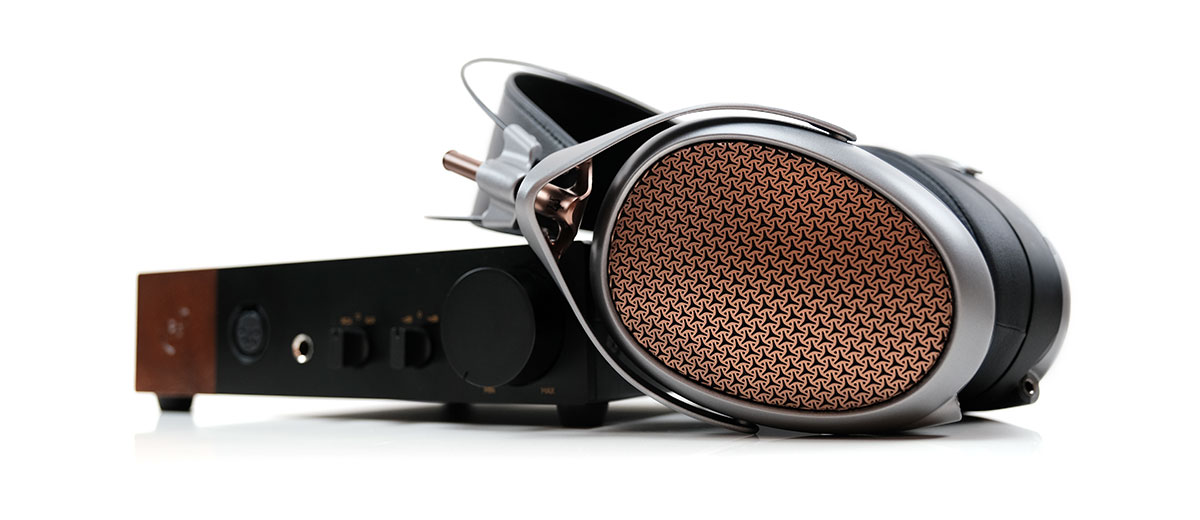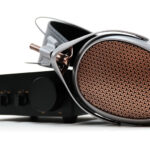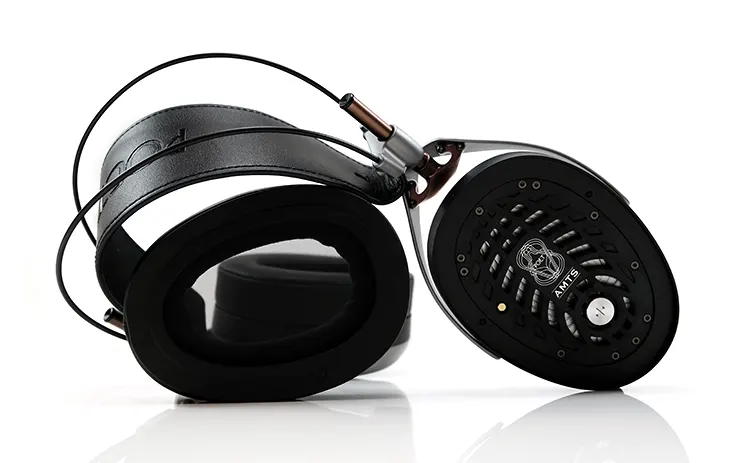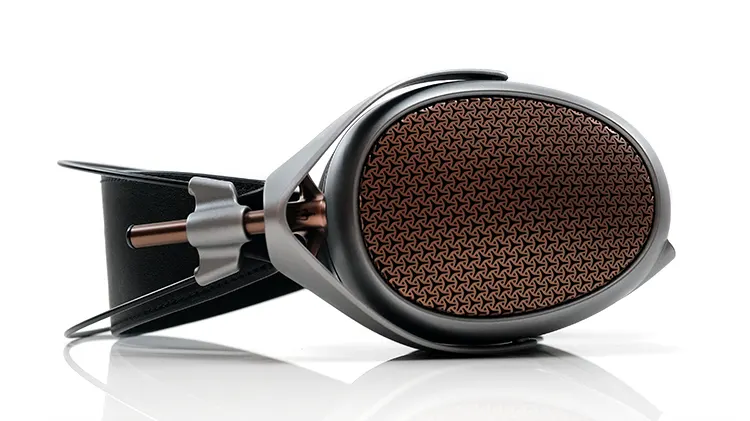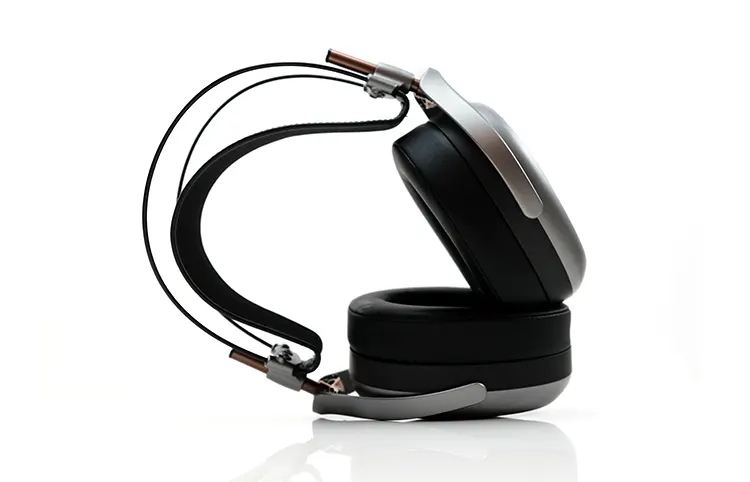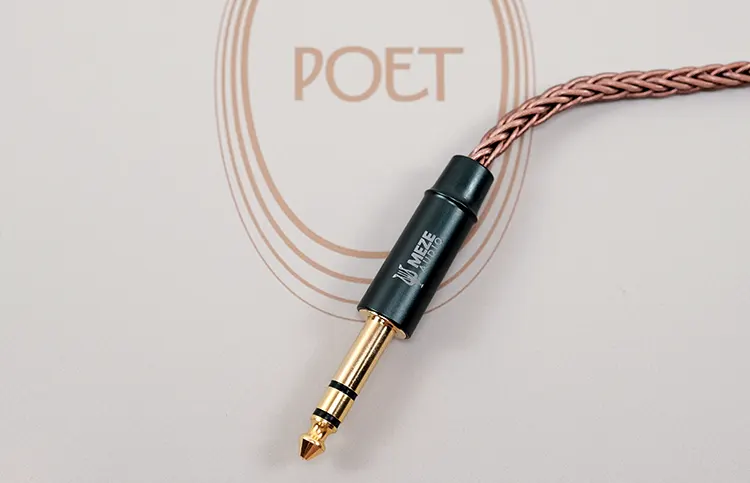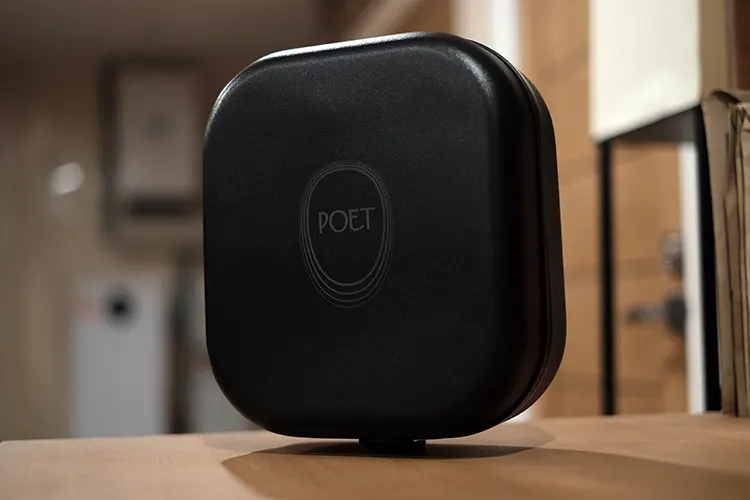Marcus reviews the Meze Audio POET, a set of open-back headphones priced at $2000. It features a fresh design and the company’s latest Rinaro Isodynamic Hybrid Array MZ6 driver.
Disclaimer: This sample was sent to me in exchange for my honest opinion. Headfonics is an independent website with no affiliate links or status. I thank Meze Audio for their support.
You can click here to learn more about Meze Audio products previously reviewed on Headfonics.
This article follows our current scoring guidelines, which you can read in more detail here.
The POET is Meze Audio’s newest set of planar headphones. Priced at $2000, it sits alongside the similarly priced closed-back Liric II and is positioned below the flagship Elite and Empyrean II headphones.
This is an open-back planar, and though tempting to say the open-back equivalent of the Liric II, it has a new Isodynamic driver drawn from the merging of the Elite and Liric driver technology, giving it a true ‘mid-way’ identity of its own.
For fans of the original Empyrean, the tuning is perhaps closer to that than the Empyrean II. You will get a smooth sound signature with a sprinkle of brilliance in the highs that many should find quite easy on the ear.
And true to Meze Audio’s impeccable design credentials, the POET looks gorgeous and delivers a very comfortable wearing experience for the user.
So is the POET the OG Empyrean reborn or something altogether different? I found out in my full review below, including how well it competes against the Liric II, the Empyrean II, and the original Elite.
Features
The Meze Audio POET is a compact set of open-back circumaural headphones rated at 55Ω impedance with an SPL of 101 dB SPL/mW at 1 kHz. That places it between the Liric II and the Elite in terms of efficiency.
It uses a new ovoid-shaped Rinaro Parus® MZ6 Isodynamic® Hybrid Array, which is a synthesis of the Parus MZ3SE from the Elite and the more compact Rinaro Isoplanar MZ4 inside the Liric II.
Like the Liric II driver, the new 92 mm x 63 mm MZ6 version is smaller than Meze’s flagship offerings, with a similar active area of 3507mm² as opposed to the Elite’s 102 mm x 73 mm 4650mm² version.
Like the Liric II, the POET uses a form of acoustical tuning on the front of the driver, which in the Liric II review I remarked how similar it was to Dan Clark Audio’s AMTS system.
At the time, Meze Audio called it ‘QWRM’ but with the launch of the POET, the full licensing process is now clear and yes, it is indeed a special Acoustic Metamaterial Tuning System or AMTS format from DCA.
Meze refers to the AMTS component as being programmed to have a specific calming effect on the performance of the POET’s high to reduce listener fatigue.
Therefore, I presume it is still acting as a quarter-wavelength resonator mask applied with a specific focus on attenuating the FR above 5-7kHz to achieve its desired effect.
Design
The POET is a gorgeous-looking set of open-back headphones. It has a similar form factor and size to the Liric II but with the iconic “Persian-like” mesh design from the Elite and OG Empyrean in a striking shimmering bronze finish that is also matched with a similarly copper-toned set of adjuster rods.
It also retains an ovoid cup design with Meze’s distinctive arched gimbals, a matte silver magnesium frame, and a detachable magnetic ear pad system.
What is dispensed with is their large carbon fiber headband and the ‘patented suspension wings design’ leather strap used on the Elite and Empyrean II.
Instead, the POET uses a ‘regular’ pressure-relieving leather strap and, surprisingly, DCA’s signature Nitinol wireframe headband system.
Also, the yoke assembly mirrors that of the Liric II just above the cup rather than extending over the grill, which, to be honest, I kind of like, given you see more of that delicious copper-toned grill than had it been behind an arch.
With AMTS and those Nitinol wireframes, the POET has an interesting, almost hybrid DCA/Meze theme. I presume the choice of Nitinol is aimed at reducing the headphones’ weight; at 405g, only the 109 PRO and the 105 AER are lighter in the Meze Audio headphone lineup, so mission success if that was the objective.
Comfort
As you might expect from a Meze design, the POET is a very comfortable headphone. Given it has a similar form factor size to the Liric II and smaller pads than the Elite, the POET comfort level sits somewhere in between.
The main improvement over the Liric II is the bigger inner cavity dimensions of those magnetic hybrid leather and velour pads.
On the Liric II, the pads sat ever so slightly on my ear, whereas this time, the opening has been widened just enough to clear the ear. It’s nowhere near as big as the Elite opening, but this sizing seems to suit the more compact POET form factor.
Also, I perceive the lateral pressure or clamping from the POET to feel slightly reduced from the Liric II’s pressure level but more so than the looser Elite or Empyrean II fitting.
It does feel more secure on my head than the big flagship with the pressure strap doing an excellent job of mitigating any potential vertical pressure hotspots.
I get a feeling Meze sees the users of the compact POET as being more mobile and active while using them, whereas the Empyrean II and Elite’s looser sitting has a “sit at home and chill’ connotation.
The lack of velour pad inclusions with the POET may reduce the price, but it takes away an even more comfortable and sweat-free fitting option and a second tuning choice. Perhaps velour simply does not sound that good with the POET?
Stock cable
The POET comes with one stock cable, but it is Meze’s premium braided Furukawa PCUHD copper cable that beautifully matches the coppery tones of the mesh grill on the cups.
The Furukawa PCUHD 4.4mm cable uses 0.04 mm x 140 conductors in an 8-wire to 4-wire continuous braid inside a TPD sleeve build. It’s a gorgeous cable design and handles beautifully with zero kinks and microphonics.
Meze has stuck with the lower profile 3.5mm sockets of the Liric II, so the cable connectors are unchanged for the POET version.
However, for some strange reason, the POET version is single-ended out of the box with a 6.35mm plug. This seems like a missed opportunity, given most are going XLR or 4.4mm, especially with modern portable amps and DAPs that have enough power to drive the POET well.
The Meze branded blue barrel finishing on the splitter and plug is refined and robust, with easily distinguishable red and blue rings on the 3.5mm connector side.
I do have to note that the splitter barrel on this cable version is slightly thicker and heavier than the older one on the original Furukawa cable version that came with the og Empyrean from 2019.
Packaging & Accessories
While the POET’s cardboard outer box isn’t as flashy as the Liric II or Empyrean II packaging, I commend Meze for including an attractive and functional hard-shell case with plenty of space to fit the headphones and cable.
The POET is not a folding headphone, so it is never going to be as compact as something like the DCA E3, meaning slipping it into a bag is probably a no-go.
However, the case styling looks a bit classier than the mobile-orientated Liric II case, almost like a watered-down version of the Empyrean II hardshell variant.
The only thing missing from the case is a set of handles which would be very useful when carrying it around.
In addition, the stock cable comes in a PU leather pouch alongside a lovely little cream-colored POET manual. If you are familiar with HIFIMAN’s high-end offerings, such as the Susvara, it’s a similar introductory booklet drawn from the website marketing collateral.
Click on page 2 below for my sound impressions and recommended pairings.

